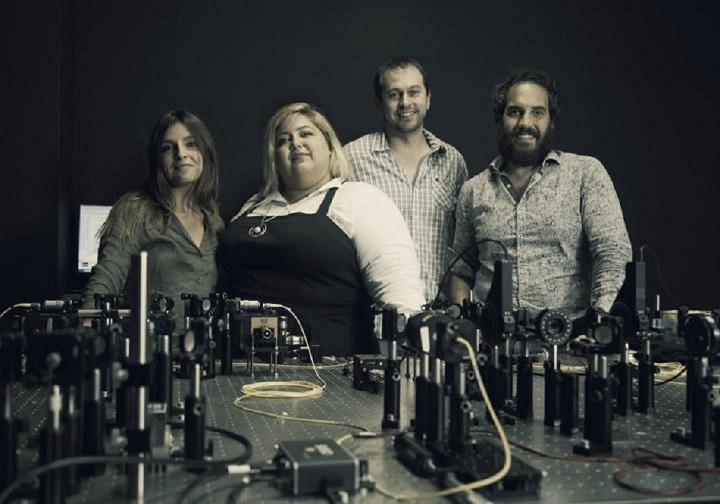 A multidisciplinary group of researchers has demonstrated that quantum light can be used to make accurate measurements in real time without disrupting enzymatic activity. Image Credit: Simonetta Pieroni.
A multidisciplinary group of researchers has demonstrated that quantum light can be used to make accurate measurements in real time without disrupting enzymatic activity. Image Credit: Simonetta Pieroni.
Researchers at a University in Rome have shown that quantum light can be used to accurately track enzyme reactions in real-time without disturbing the enzyme activity. This breakthrough will be significant in the advancement of quantum sensor technology for biological applications.
Overcoming the Impact of Light on Enzyme Activity
A multidisciplinary Italian research team at the Università degli Studi Roma Tre has demonstrated that enzyme reactions can be tracked down in real-time with the help of quantum light. The team established a method that let them control light at the single photon level, allowing them to use low illumination that does not disturb enzymes. The new technique can efficiently track the dynamics of enzyme activity with a higher resolution than current methods can provide.
Enzymes are proteins that are vital to the proper functioning of biological systems. They are required to catalyze essential reactions within the body, and their behavior can be indicative of a person’s health. Enzyme activity influences the gut, makes DNA, and allows cells to communicate with each other. As the reactions they catalyze influence the chirality of the reagents their activity can be tracked using light. However, until now, there has been a major barrier preventing the development of an optical method for tracking enzymes, and that is the effect illumination has on enzyme activity. Usually, light has the effect of yielding decreased enzyme activity.
The Italian team set about finding a solution to this, so that light could effectively be used to track enzymes without impacting on their behavior. They were tasked with the challenge of developing a system using low-intensity light which maintains high levels of sensitivity. To achieve this, the team applied quantum phase estimation to the measurement of invertase enzymatic activity in real-time. They showed that being able to control the probe at the quantum level allowed them to reduce the impact of the light on the enzyme activity while maintaining sensitivity.
A Step Towards Quantum Sensors That Can Optimally Use Light
The study saw researchers using their innovative method to observe changes in the chirality of a sucrose solution following invertase (an enzyme that catalyzes the hydrolysis of sucrose) activity. Chirality refers to how well a molecule can rotate the polarization of light. Tracking this information allows for calculations on the number of molecules that the enzymes have successfully processed at a given time.
The ability to control the probe at the level of the photon was fundamental to reducing the invasiveness of the technique, while optimizing its sensitivity.
What the team achieved represents a significant step towards improving the capabilities of quantum sensors. Theoretically, quantum sensors could be developed to use light in this way for applications in biological imaging, detecting gravitational waves, magnetic field sensing, and more.
The team attributes the success of their study to the interdisciplinary nature of the team which combined the expertise of biologists and quantum physicists. They had the knowledge of how to manipulate photons along with the understanding of biological systems, the combination of the two was fundamental to the achievement of the team.
What’s Next for The Technology?
The researchers involved in the project stated that before an application can be developed using the technology they created, there would have to be a revision of some features of the method. Moving forward, the team will be working on reducing light losses, which act as a major limiting factor. While the technology is not yet ready to be developed into applications the work still represents a major advancement for quantum sensor technology in the field of biology.
Disclaimer: The views expressed here are those of the author expressed in their private capacity and do not necessarily represent the views of AZoM.com Limited T/A AZoNetwork the owner and operator of this website. This disclaimer forms part of the Terms and conditions of use of this website.